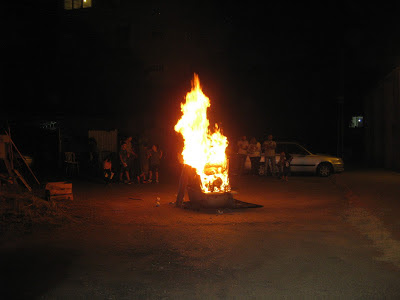You should never ever need one, but it's good to have one, just in case. It could save lives .
Mamad (acronym for the hebrew 'merchav mugan' - meaning protective space) is a fortified room with reinforced, cemented walls and ceilings, thick floor, airtight steel door and window. It is supposed to be impenetrable to rockets carrying bombs or chemical/biological stuff. In peace time, it can be used as a storage/study/play room, but not as a kitchen or bathroom.
The law that requires a newly built house/ building /apartment to have a 'mamad', is from year 1993, after the notorious "Gulf War". There are certain regulations with which I am not familiar as I myself don't own a 'mamad'.
The thing is, a five year old boy, was critically injured during one of the recent rocket attacks, ( he later died in hospital-rip), when a shrapnel punctured the window of the 'mamad'. It is considered a rare incident, and it is under investigation.
There were also some people who got injured by falling on their way to the mamad. A 73 year old woman, awaken by the alarm, got quickly off her bed, ran towards the mamad and fell on her head before reaching the mamad. She died a few days laterׂ - rip (perhaps, a light helmet should be considered for prevention of tragic cases like this one.)
Those who don't have that kind of room (like me) are advised to stay in the most inner spot of their home, away from windows and exterior walls.That's what I do upon hearing the siren, and, immediately start ...praying to God asking for protection.
By the way, I became aware of how deadly a fall on the head could be, while following the news about the tragedy of Natasha Richardson, british actress, daughter of the great Vanessa Redgrave, wife of actor Liam Neeson. She fell on her head while skiing in Quebec, Canada, and died in a matter of days in 2009 (rip). I think since then, a helmet has become mandatory on ski slopes.













